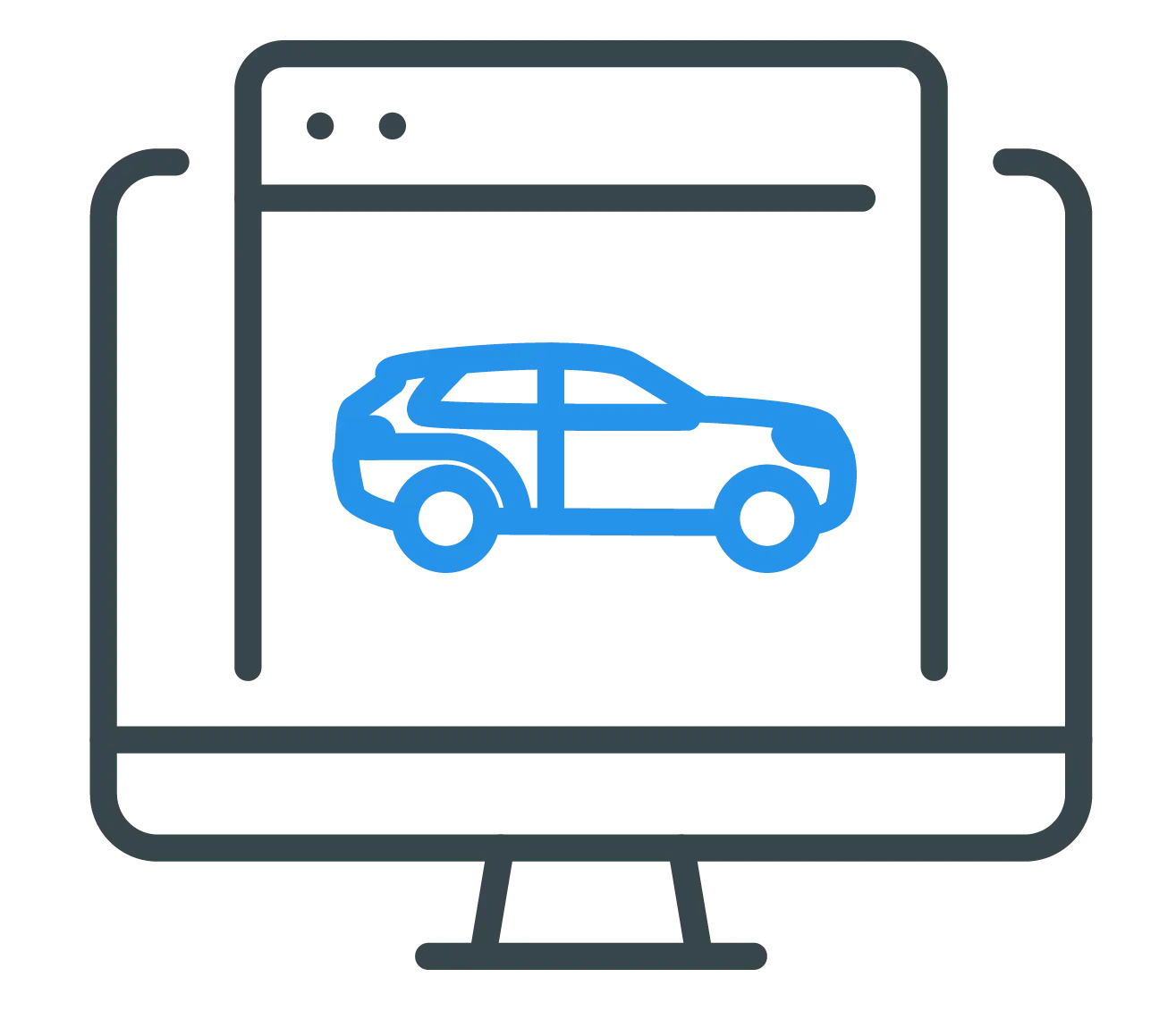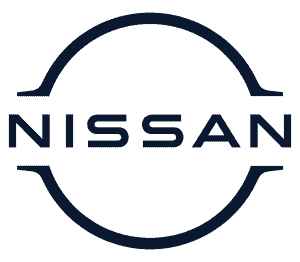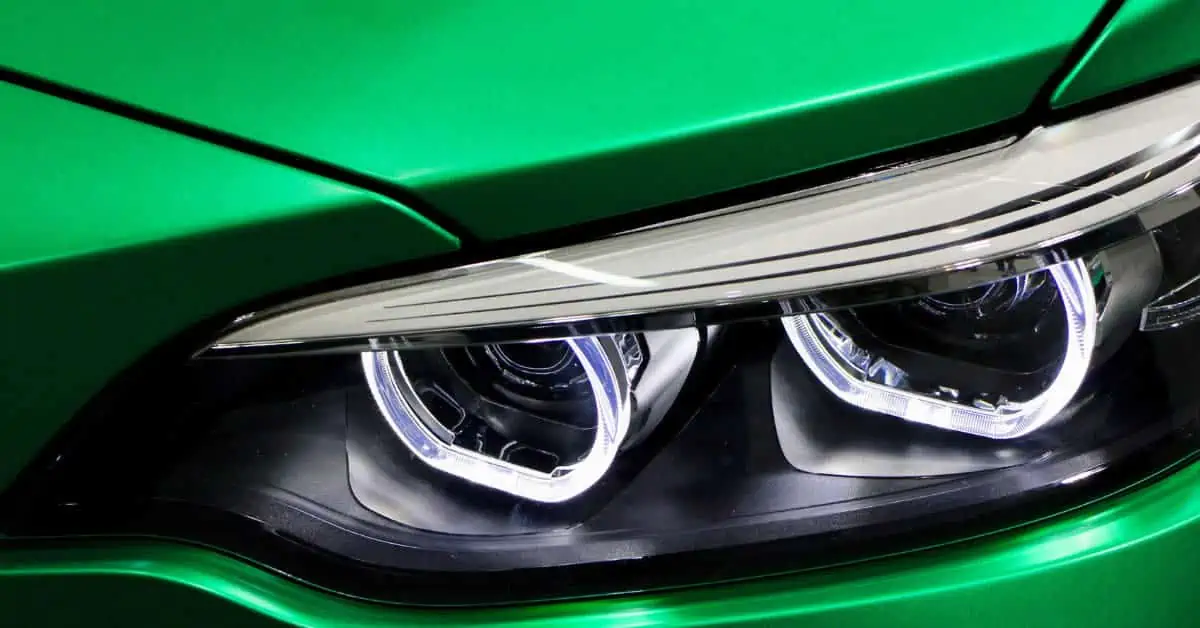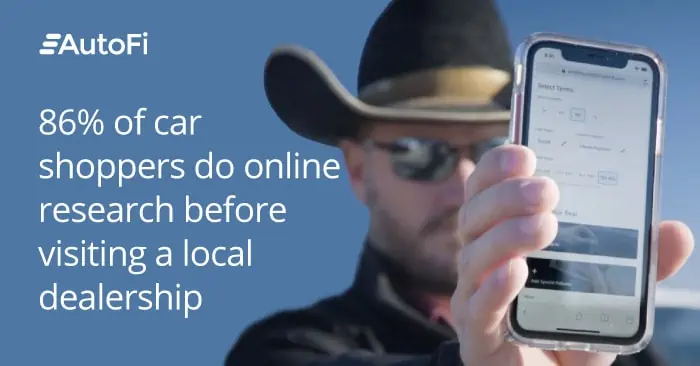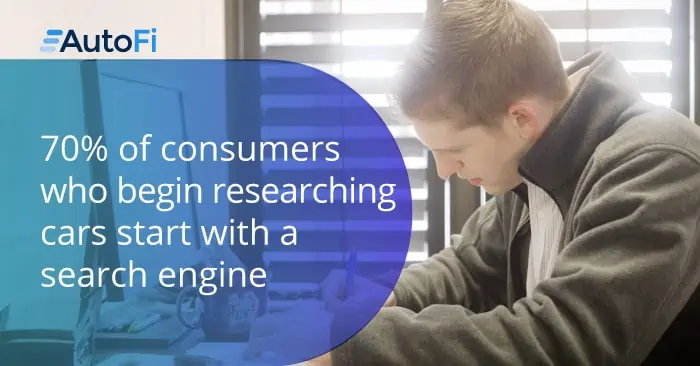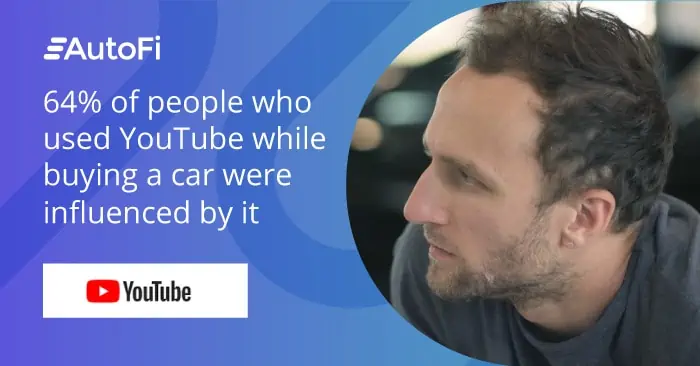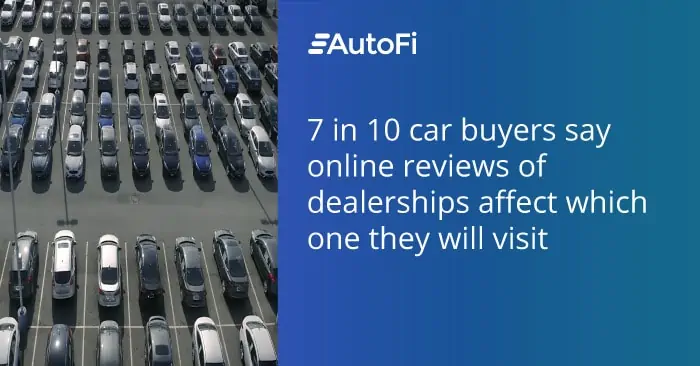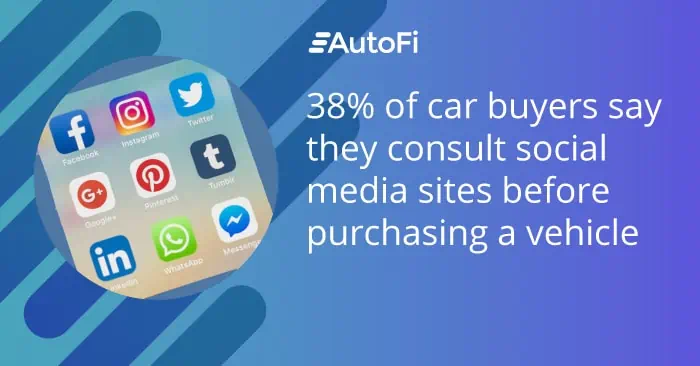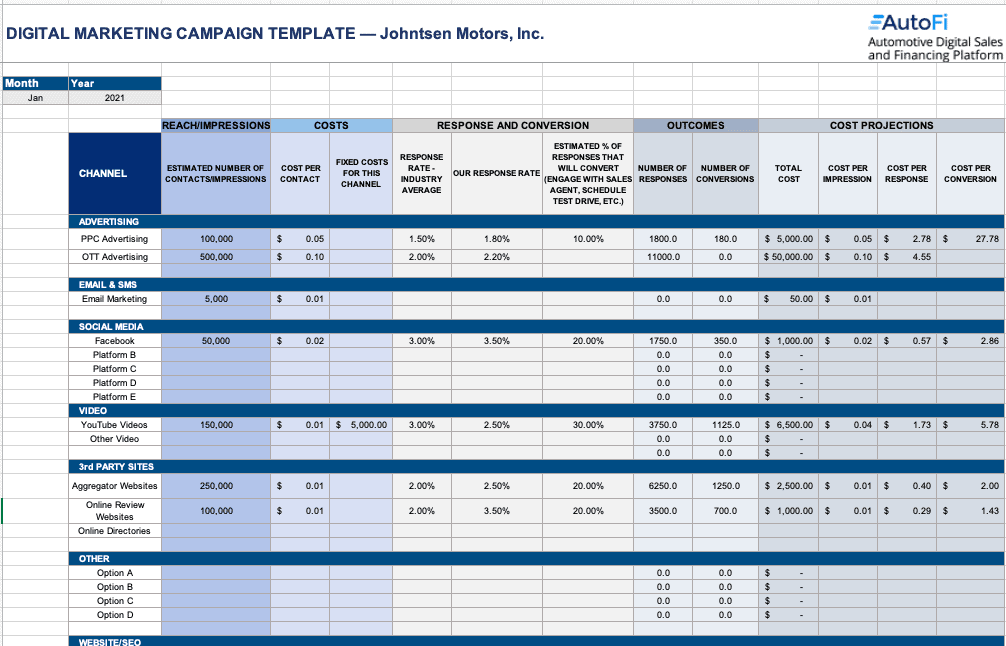Almost all consumers today are shopping for cars online before they go near a dealership. Smart auto dealers use digital marketing strategies to convert those online shoppers into buyers. I draw on my 20 years of experience to share the top strategies that work.
In this Article:
- Why digital marketing is so vital for auto dealers
- Primary digital marketing channels for auto dealers
- Best strategies for dealership digital marketing
- A downloadable template for an auto dealership marketing plan
How Is Digital Marketing for Auto Dealers Different from Traditional Marketing?
Digital marketing refers to marketing online through websites, emails, and social media. Digital marketing differs from traditional marketing in ways other than where it appears. The practice is more interactive and focuses more on customers.
A car dealership can’t focus a television commercial on a customer of a specific age or other characteristics. That potential customer can’t interact with the TV ad. And the dealer often will not know how effective that commercial was in luring potential customers to the dealership.
Digital marketing can target demographics and other categories of potential buyers. Dealers can quickly and easily see how well the marketing performed and how many people want to learn more.
Why Automotive Digital Marketing Is So Important Today
Automotive digital marketing is crucial because customers shop for cars in vastly different ways than 10 or 15 years ago. Most customers spend hours online shopping for their next car before they ever go to a showroom.
Here are some details on how much online now dominates car shopping:
- 86 percent of car shoppers do online research before visiting a local dealership, according to a study by digital marketing agency Adtaxi.
- Customers who bought a car spent an average of 15 hours on the complete buying journey: researching, shopping, visiting dealerships, and negotiating, according to a 2020 Cox Automotive study. Almost two-thirds of that time—nine-and-one-half of those hours—was spent online.
- According to a Digital Air Strike study, seven in 10 car buyers say online reviews of dealerships affect which dealerships they will visit.
All of this means car dealers must have a strong presence and engage with potential customers online. They need to understand how to focus marketing toward particular groups of buyers and give them the information they want. It’s imperative all of that happens before the buyer ever comes to a dealership or even makes a phone call.
(To learn more about how much online shopping affects many aspects of the car business, including how dealers engage customers and sell automobiles, visit our automotive digital retailing guide.)
How Much Money Do Car Dealerships Spend on Advertising?
Franchised new car dealerships spend about $600 per new car sold. That comes out to spending billions of dollars every year on advertising. Online advertising is increasingly the dominant form of advertising for auto dealerships.
According to the 2019 annual report from the National Automobile Dealers Association (NADA) New car dealerships spent $9.25 billion on advertising in 2019, or about $628 per new car sold. That declined in the first six months of 2020—likely because of the COVID pandemic. New car dealerships spent about $3.73 billion on advertising in the first six months of 2020, or about $600 per car sold.
In all of 2019, new car dealers spent 56 percent of their advertising dollars online; the next highest expenditure was the 14.5 percent spent on television advertising.
Automotive Digital Marketing Channels
Auto dealers can and should use multiple digital marketing channels to reach potential customers. This practice is called omnichannel marketing. Possible channels range from pay-per-click advertising to a well-designed website to online videos.
Here are the top automotive digital marketing channels:
Pay-Per-Click Online Advertising
Pay-per-click advertising, also known as PPC, can be an essential tool for effective digital marketing. A dealership pays a search engine (most often Google) to show your link at the top of a search result for certain keywords. They pay Google a small amount every time someone clicks on that ad to learn more.
PPC continues to grow in the automotive industry. In 2019, eMarketer found that PPC ad spending in the automotive vertical increased 22 percent from the prior year.
Your ads can be text only, with a link, or sport images or videos. You’ll want to research the best words to use to attract the right customers. Pay attention to the negative words you’ll want to use to ensure you block out irrelevant searches (when searchers, for example, might be wanting to learn more about “mustang” horses instead of searching for a Ford “Mustang.”)
Another component of paid online advertising is called “programmatic display,” which allows you to show your ad to an extremely targeted group based on what they are reading on another website. They might be reading an article about buying cars, for example, or about small SUVs.
A Well-Designed Website with Helpful Content for SEO
Your potential customers can and should also find you without paid search engine advertising. Enter: Search engine optimization, which is optimized content on your website that helps search engines and searchers find you.
One study by Kenshoo, found that 70 percent of consumers who begin researching cars start with a search engine. There’s an advantage to your site having a high listing on a search engine results page; consumers consider them more trustworthy than a PPC ad. So, aim to be at the top of non-PPC, or organic, search results.
You’ll also want a well-designed website featuring content car buyers are looking for detailed information on individual automobiles and without flashy gimmicks that repel them. Today’s online car shoppers want to find all of the information necessary to make a vehicle purchase online. Learn more about providing a richer website experience for automotive shoppers.
Many car dealerships’ websites have too many calls-to-action (CTAs)— interactive components requesting a viewer’s name and contact info. That said, there should definitely be a few CTAs strategically placed on your website, but you don’t want them to overwhelm and turn off a viewer. Read more about how to increase your automotive website conversions.
Voice search continues to expand. Potential customers ask Alexa on their smart speaker or Siri on their smartphone to point them towards the best auto dealerships. Be sure to optimize your content to answer simple and conversational questions.
To learn more about SEO, read Moz’s post that covers all the SEO basics for car dealerships.
Blogs
Including a blog on your site that provides basic consumer information about cars and car-buying can also improve your search engine results.
When consumers begin searching for a car, they won’t only look for a specific vehicle. They will also want to learn general knowledge about cars and car-buying. Many consumers, for example, will ask search engines about the pros and cons of leasing versus buying a car. If you’ve written a blog on that topic, there’s a good chance your dealership can be a top result for that question. You can do online research to see what questions consumers most often ask about cars and car-buying. One free online tool that provides you the questions people have is answerthepublic.com.
Your blog will also help consumers view your dealership as a trustworthy source of information and advice.
Local SEO
You can’t just focus on optimizing your website for SEO. You must also optimize it for local SEO—making sure people looking for cars in your metropolitan area find you.
Local SEO has become even more important as more and more people use their phones to access information online. Roughly half of all mobile searches are now for local results. People are on the move and want to know where to get a pizza or shop for a Ford 150. You want to be in the results when they’re looking for a vehicle.
Set up an account and include your address and other geographic info in Google My Business. You’ll also want to have local information throughout your website.
Social Media
Social media is a vital part of any digital marketing plan. According to research by the Chief Marketing Officer Council, 38 percent of car buyers say they consult social media sites before purchasing a vehicle.
Create an account on every social media network, from Facebook to Twitter to Instagram and more. Then task staff with keeping those accounts active, with regular posts about your dealership, car-buying, and vehicles.
You can also buy ads on social media platforms. A distinct advantage is you can target specific potential customers—people living in your metropolitan area who’ve been searching for SUVs, for example. Social media also allows you to see your return on investment for purchasing those ads easily. Facebook metrics, for example, can tell you exactly how many people clicked through to your website from one of their ads.
Online Videos
Viewership of online automotive videos is skyrocketing, and those videos heavily influence potential car buyers.
According to a Google study, 64 percent of people who used YouTube while buying a car were influenced by it. That’s more consumers than were influenced by TV, newspapers, magazine, or automobile reviews.
You might create short videos that show:
- A car on a test drive
- Testimonials from happy customers
- New vehicles and highlight unique features
- Tips on repairing and maintaining your car
The videos can attract more clicks in your social media and online ads and draw people deeper into your website. They can also help attract more visitors to your website through search engines ranking your videos. An important tip when posting a video to YouTube: Upload a written transcript of the video. The transcript generally isn’t visible to viewers, but it will help boost how Google ranks the video in search results.
Email Marketing
Also educating their customers since they last purchased or serviced at a specific dealership now, they can be in the driver seat when it’s time for them to be in the market for another vehicle- advertising to your customers on how easy it is to buy from you and save time etc…
Email is as old-fashioned as things can get in the digital world, but it’s still effective.
First, you can and should send emails to your current and past customers. Send to people who’ve bought from your dealership or have their car serviced with you. They will eventually be in the market for a car again; remind them how easy and economical it is to buy from you.
You can also ask prospective customers for their email addresses on your website and through other marketing materials. Send targeted messages based on what the consumers have told you. Be sure to personalize the emails as much as possible and only send them the information they want. When sending emails, always include links to allow potential customers to get to your website. Adjust the length and tone of the emails based on responses you get or don’t get.
And consider distributing regular newsletters via email to people who sign up for them. These newsletters might cover topics like the latest car models, special deals, or useful info about cars or car-buying.
SMS Texts
Your dealership can also send a text to customers who opted-in to receive messages from your company. This method is a quicker and more efficient way to reach consumers than through emails. People increasingly use their mobile phones to access business websites, including car dealerships. Customers who get a text from you can immediately go to your website.
Online Directories
Create your own listings in online business directories. These include nationally-based directories like Yelp, along with more localized versions. Make sure your profile is complete and has links to your website and social media accounts.
Online Reviews
Online reviews of your dealership are crucial to success. As mentioned above, seven in 10 car buyers say that online reviews of dealers affect where they will buy a vehicle.
Provide ways for customers to give you reviews on your website or other venues like Google, Yelp, or social media. Be sure to monitor those reviews and respond to them (both positive and negative) in a constructive way. This tactic is only part of what you should be doing for your dealership’s online reputation management. You also need to monitor how your dealership appears in general search engine results.)
Don’t forget to add a link to your website on external review sites.
Third-Party Websites
Dealers will want to put all of their inventory—new and used, with all details about each car—on leading third-party websites that consumers often visit first when searching for a vehicle. The sites include Autotrader.com, Cars.com, Edmunds.com, and CarGurus.com.
Not listing your inventory on these sites is like having your cars behind your dealership building instead of out front.
OTT Advertising
Streaming video is growing exponentially. An estimated 147 million adults in the U.S. now access video content through services like Roku, Hulu, Amazon Fire TV, Sling, and similar platforms. In fact, it’s estimated that 80 percent of all internet traffic is streaming video.
Advertise on these platforms. This type of marketing is called “over the top” advertising because you can bypass traditional TV and cable networks. There are a number of advantages, including it is less expensive and more focused than traditional broadcast advertising.
Mobile Optimization
According to Broadband Search, in 2019, 53.3 percent of all internet traffic came through mobile devices. That compares to 16.2 percent in 2013. In the fourth quarter of 2019, 58 percent of all organic search engine visits in the U.S. were from mobile devices.
People are searching on their phones to find car dealers in your area and then viewing their websites on their phones. Make sure to optimize your website (content and design) for mobile devices. Your site should look seamless and easy to view on a mobile phone.
Direct Mail
Direct mail isn’t digital, but it can complement and help your digital marketing efforts. You can send a direct mail postcard to a targeted recipient with links to your website. Those links can offer more information on new cars at your dealership, special sales events, and other details.
Automotive Digital Marketing Channel Matrix Graphic
This digital marketing channel matrix shows options of where auto dealerships can focus their efforts.
Automotive Digital Marketing Channels Overview
Paid Advertising
|
Website Design & SEO
|
Other Messaging Opportunities
|
Third-Party Websites
|
Automotive Digital Marketing Strategies
Having a strategy for your digital marketing efforts is critical when deciding on which channels to use.
Top digital marketing strategies for auto dealerships:
- Understand Where Your Shoppers Are and Make Sure You’re There: Customers use a various websites and tools to research car-buying. The top four:
- 32 percent visit third-party aggregator sites like autotrader.com
- 30 percent research questions or search for their target vehicle through a search engine
- 24 percent visit local dealer websites
- 14 percent visit brand/manufacturer websites
Think seriously about at least the top three areas as you market. Dealers that are represented and excel in those areas have the best chance to impress potential customers. (To learn more about how to perform effective digital marketing for today’s customers, including customers willing to buy remotely, visit “Marketing for Remote Sales.”)
- Deliver the Right Content for the Right Channel: Shoppers’ research goals and responses vary by the device they’re using. For example, when consumers are on a desktop computer, it’s easier for them to:
- Use your website software to customize a new vehicle
- Compare details on competing vehicles
- Get warranty information
When they’re using a mobile device, it’s easier for them to:
- Reach family and friends as they’re shopping for a car
- Reach out to the dealership or a salesperson
- Book a test drive
- Research location information for local dealers
Your dealership needs to consider shopper behavior as it builds various components of its website. Keep that in mind when targeting its digital advertising for mobile and users.
- Ensure Your Digital Campaigns Target the Right People: Customers look for different features in cars and dealerships. People shopping for a Merced Benz S-Class Sedan focus on features and particulars that someone in the market for a Toyota Corolla might not. They expect the marketing messaging from the dealerships to know that.
Keep this in mind when marketing the broad category of cars your dealership sells. Remember these differentiators when working with customers—you may sell various brands at varying price points. Get the right sort of digital marketing message to each customer.
Read our creative remote selling strategy tips to find more way to engage customers,
- Do A/B Testing: Be sure to test how various digital marketing channels are working. Test each message within a marketing channel to see how it’s performing. A/B testing involves showing similar customers two versions of a message to see which brings a better response.
An email campaign, for instance, might include two options for a message to similar groups. You’ll want to track which collateral brings a higher email open rate and a higher click rate on links within the email.
You may even try A/B testing on social media platforms. For example, target the same Facebook message to different audiences within Facebook.
- Understand Good and Bad Conversion Rates: Every type of digital marketing has an average conversion rate—the rate at which potential customers click on a link in an email, for example, or click on a digital ad. Some channels have average conversion rates of only 1.5 or 2 percent. Learn the average conversion rate for each channel to determine what’s a “good” conversion rate and that your efforts are meeting that number.
- Monitor and Track All Results: Many digital marketing channels allow you to track results easily. However, there are other times when you’ll need tools to monitor how your digital marketing is doing. For instance, call tracking software will track incoming phone calls that may result from specific digital marketing.
- Consider Hiring a Full-Time Digital Marketing Expert: Many dealerships hire agencies for their advertising or marketing. There are plenty of agencies with expertise in automotive marketing.
Still, dealerships should consider the value of hiring a full-time expert to work entirely on their digital marketing. When nine out of 10 car buyers start their shopping online, good digital marketing is vital to a dealership’s success. The return on investment for hiring a full-time digital marketer—an expert focusing exclusively on smartly marketing your dealership—can be exponentially high.
Auto Dealership Marketing Plan Template
Digital marketing templates can help auto dealerships track their digital marketing efforts, along with results from and costs of those efforts. Download our comprehensive and easy-to-use digital marketing template.
Download auto dealership marketing plan template
Sample Auto Dealership Marketing Plan
We completed an example digital marketing plan for an auto dealership to help you get started. The example plan uses the above marketing plan template.
Download auto dealership marketing plan example
Auto Dealership Marketing Ideas for 2021 and Beyond
Technology will continue to change how dealerships market themselves and their cars. Artificial intelligence (AI) will have a huge impact on digital marketing in the future.
Auto dealership marketing trends to watch:
- Virtual Reality on Websites: Consumers will be able to visit dealership websites and view semi-virtual reality videos of a showroom, sitting inside a new car, or even taking a test drive from the point of view of the driver.
- Chatbots: These tools are increasingly showing up on sales-focused websites, including those of auto dealers. They represent the first baby steps in AI. Chatbots can quickly and easily engage with website users. (For example, Facebook Messenger bots help you converse with over 1 billion people who use Facebook Messenger every month.) Chatbots can answer user questions or provide information based on their actions on the website. These efforts can move those users toward engaging with a dealership sales agent or visiting the dealership. Chatbots’ ability to engage with prospective customers will continue to develop.
- Other Artificial Intelligence: Integrating AI into websites and other applications will allow automotive marketers to reach customers at the right moment with an individualized marketing message. AI will help dealerships target their marketing with the right collateral, to the right customers, through the right channels.
Automotive Digital Marketing Platforms Make Online Marketing More Effective
Digital marketing platforms for the automotive industry give dealerships the tools they need to market their services and cars smarter and more effectively. The solution can also help dealerships engage customers, answer questions and move them through a sales process—all online.
These platforms can help your dealership meet prospective customers where they are starting to shop for a car—online. They can provide all the information customers need when they want it, making it a positive customer experience before they step inside a dealership.
Automotive Digital Marketing Case Study
AutoFi has given Sam Pack’s Five Star Ford in the Dallas metro area the tools it needs to and marketing. The dealership’s leaders understand that most people now do much of their shopping for a car online before visiting the dealership. With AutoFi’s help, Sam Pack’s Five Star Ford customers can click a “shop online” button on its website and move into an online trove of details about specific automobiles and the car-buying experience.
Brian Huth, General Manager of the dealership, says: “I think the future of any Ford dealership, when it comes to digital retailing, is you’re either going to get on it, or you’re going to be left behind. Customers—at the end of the day—do want to touch and feel the car. But they don’t want to go through the hassles of wasting hours on end trying to get the deal. So if you’re not moving toward a digital space, I think you’re pretty much going backward. This is the wave of the future.”
Since using the AutoFi platform in tandem with existing tools, the dealership has secured its spot at one of Ford’s Top 100 Volume dealers and continues to climb up the charts.
See how dealerships are using the AutoFi platform as part of their digital marketing efforts.
Reach Customers Where They Shop with AutoFi Digital Marketing Tools
The AutoFi platform has all the tools a dealership needs to engage customers and meet them where they want—online. Shoppers want to do more than just look at cars online. Many of them want to do everything from finding trade-in details to securing financing online and even making a purchase. That’s why dealerships need a tool to help them market their inventory effectively and deliver the information customers crave.
Learn more about how AutoFi’s digital retailing platform works.


